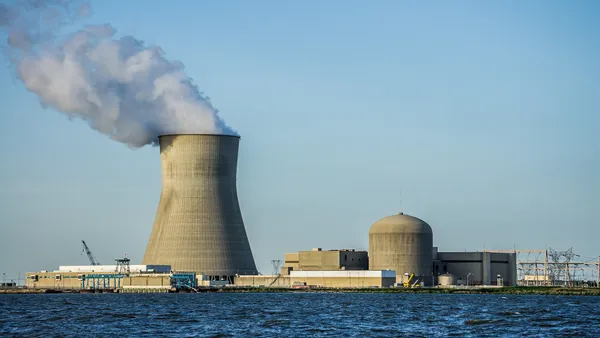Dive Brief:
-
A bill in the Ohio legislature would overturn the state’s current electric power regime and replace it with a fuller version of deregulation that would require the state’s investor owned utilities to divest their generation assets, according to The Plain Dealer.
-
Since 2008 Ohio’s power sector has been ruled by the so-called Energy Security Plan — Ohio's version of integrated resource plans — which often results in lengthy regulatory proceedings as stakeholders debate utility investments and bill riders.
-
House Bill 247, introduced last week by by Rep. Mark Romanchuk (R), would eliminate the ESP and force utilities to base customer rates on wholesale power market prices.
Dive Insight:
Ohio’s regulatory regime has become a hybrid model of deregulation. The state is part of the PJM organized power market, but regulated utilities can still own power plants.
To support these assets, utilities often seek riders and other customer charges in drawn-out proceedings. And increasingly, they are turning to the Public Utilities Commission of Ohio to secure direct financial support for uncompetitive generators.
FirstEnergy is currently pushing for passage of legislation that would provide a subsidy for two nuclear plants. And last week other Ohio legislators introduced a bill that would provide perpetual subsidies for two plants run by the Ohio Valley Electric Corp., owned by a group of utilities in the state.
The bills come after FirstEnergy and fellow utility AEP pushed for years to secure financial support for a group of ailing baseload generators, including coal and nuclear plants. State regulators approved some subsidies, such as funds for AEP's share of the OVEC plants, but FERC blocked a larger package of direct support payments for the plants last year.
Romanchuk’s legislation would look to end those debates and the lengthy ESP dockets by forcing regulated utilities to divest their generation assets. And it would cut back on the use of non-bypassable riders on customer bills to help pay for such assets.
“These non-bypassable riders have not worked out very well for consumers,” Romanchuk told the Plain Dealer, which pointed out FirstEnergy has more than 30 riders, though not all are active for every consumer all the time.
The ESP is the "mechanism" thorough which the non-bypassable charges are added to consumer bills, Romanchuk said.
Romanchuk’s bill has the support of coalition of consumer groups that includes AARP Ohio, the Ohio Consumers’ Council, the Northeast Ohio Public Energy Council, the Ohio Farm Bureau, and the Ohio Manufacturers’ Association.
How the state's generators and utilities view the measure remains to be seen. Dynegy, a major gas and coal generator, has decried Ohio's hybrid power market model, saying a fully deregulated model is superior. AEP, by contrast, has said it will push for re-regulation of the state power sector and could introduce a bill later this year. Neither commented for the Plain Dealer report.
HB 247 was introduced on May 24 and has not yet been assigned to a committee.













